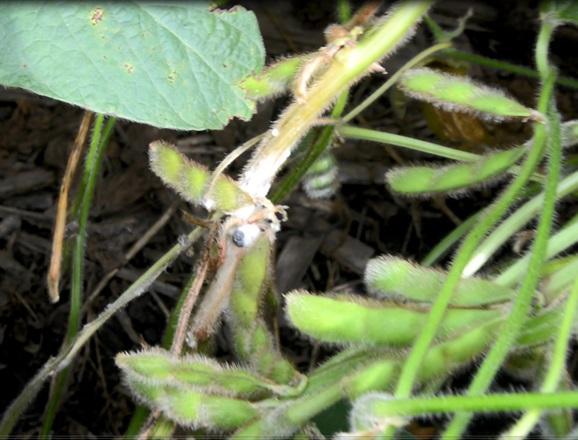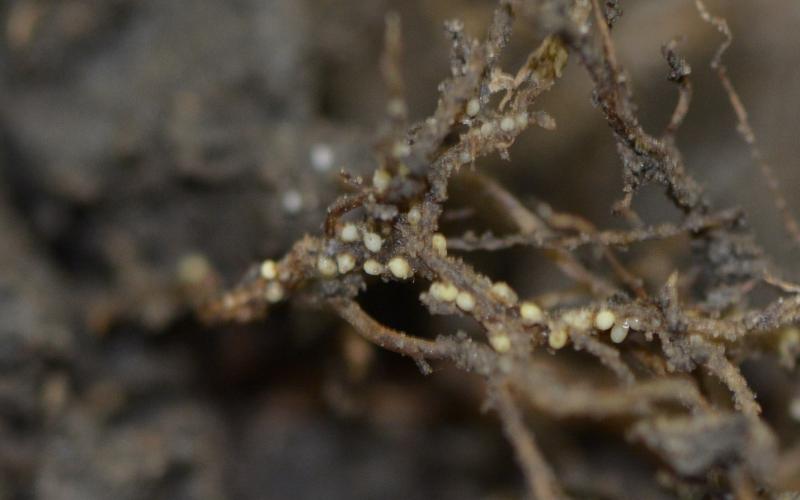Originally written with contributions by Emmanuel Byamukama, former SDSU Extension Plant Pathologist.
White Mold in Soybeans
According to USDA-NASS crop progress report for the week of July 17, 49% of the soybeans in South Dakota are at flowering. The flowering growth stage is also the time when white mold infection is initiated. The white mold pathogen infects the soybeans through the flowers that are senescing after pollination. Unfortunately for this disease, by the time symptoms are seen, it is too late to apply a fungicide. Growers need to be aware of the risk factors for white mold in order to decide the need for applying a fungicide in order to prevent white mold from occurring when soybeans are at flowering.
What are the risk factors for white mold?
- Field history.
In the past, has the soybean field been infected with white mold? It is most likely that if a field has had white mold in the past, white mold will develop again. - Row spacing.
Are soybeans planted <20 inches row spacing? The narrower the row spacing, the higher the risk for white mold. - Cultivar susceptibility.
Is the planted cultivar rated moderately susceptible to susceptible for white mold? While there is no complete resistance to white mold, cultivar differences in tolerance to white mold do exist. - Fertility level/yield potential.
Does the field have an elevated fertility level? Has animal manure been applied this current season or past few seasons? Animal manure or excessive fertilizer tends to promote quick growth leading to early canopy closure. This increases the risk for white mold. - Planting population.
The higher the plant population (>150,000 seeds per acre), the faster the canopy will close and provide the microclimate for white mold to develop. - Landscape/lay of the land.
Does the field have a tree shelter belt or pronounced valley bottoms? Tree shelter belts tend to block air movement for soybeans close to the shelter belt. Also field bottoms tend to remain wet for longer periods of time, providing a conducive environment for white mold infection. - Weather.
White mold infection is favored by temperatures of 85°F or cooler and moisture whether it be from rain, fog, dew, or high relative humidity.
Management
For fields that have some or all of the above conditions, white mold risk may exist. Although white mold infection is driven by rainy weather and a lot of areas are relatively dry, it is important to monitor soybean growth and rainfall in the forecast. For soybeans at flowering with some of the above risk factors, especially field history and narrow row spacing, a fungicide may be advised. As noted above, the best fungicide timing for white mold management is at flowering (R1).


